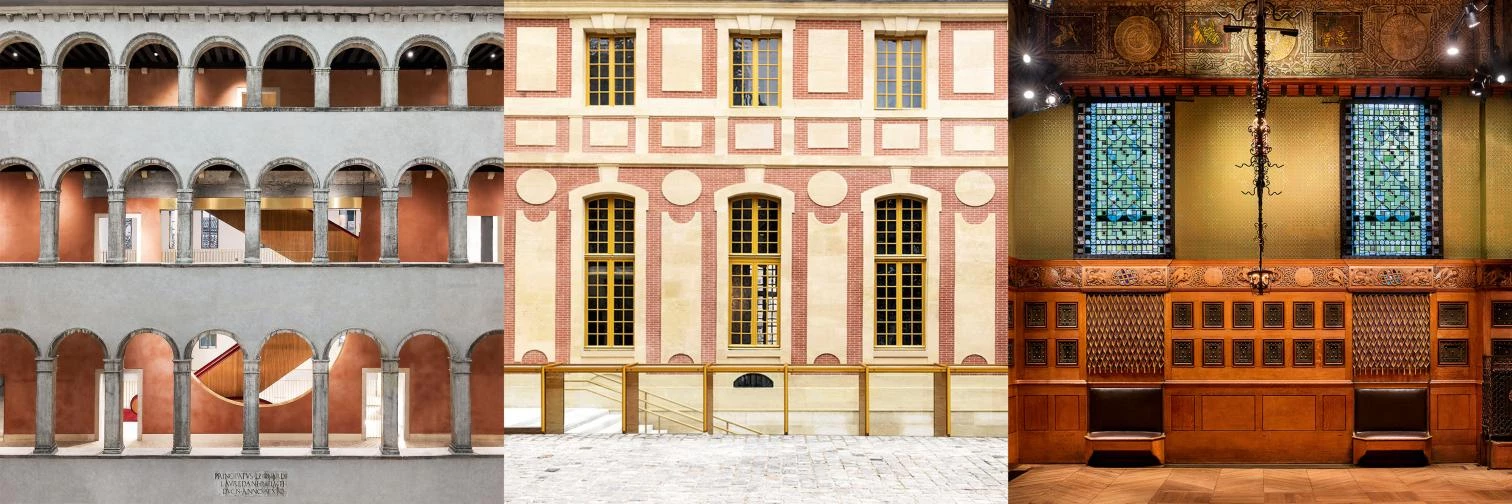Three Strategies
Reinvention, Reuse, Recovery

The early moderns saw the past as a hindrance to eliminate or at least transcend and ‘go beyond.’ But as modernity matured, becoming less and less ‘modern,’ the past tended to shed its bad reputation and eventually carved an actual niche for itself in the present; a change which of course has also manifested itself in architecture. The marks of the past can in themselves be a pattern in the project, and the three restoration works featured in the following pages – executed by three leading European architects – each give a different lesson on creatively incorporating the previously uncomfortable presence of memory and entropy.
The first one, the Fondaco dei Tedeschi in Venice, tranformed by Rem Koolhaas, faces the past with a strategy of reinvention that consists, on the one hand, in returning the building to its original commercial use, and on the other, in adopting a collage aesthetic that with honest openness – and sometimes undisguised provocation – exposes the various layers of the passage of time, including those which in principle may seem to lack any real historical or artistic value.
In turn the Pavilion Dufour in Versailles, retouched by Dominique Perrault, illustrates a reuse strategy which leaves a historical facade intact in order not to disrupt the powerful surroundings, but effects radical changes in the interior spaces and incorporates underground levels, with the result that there can be a coexistence, albeit through separation, of visible and invisible, past and present.
Finally the Park Avenue Armory in New York, entrusted to the firm Herzog & de Meuron, has with delicacy and critique been restored to its original state through recovery of its most characteristic elements, including furniture, decor, and even the range of colors, through an approach that has involved the elimination of additions of little worth and the subtle preservation of the building’s exceptional palimpsest nature.





